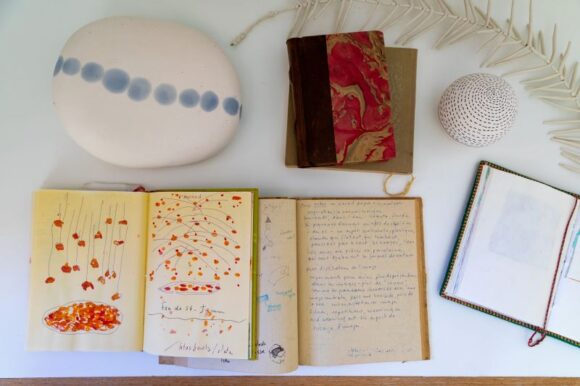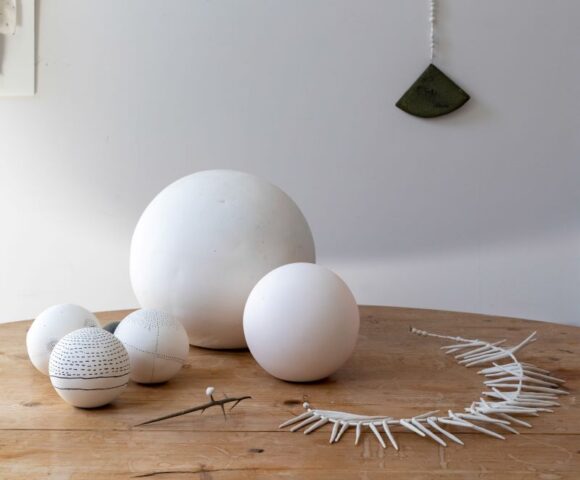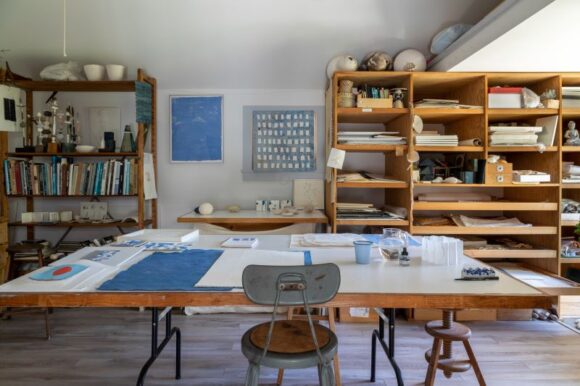
OLD LYME — The Lyme Academy of Fine Arts presents Amphora, a retrospective survey of four decades of work of the Old Lyme-based artist Patricia Smith (b.1942).
Amphora is both a celebration of the earth and the earliest crafts it bore, and a deeply personal tribute to Smith’s enduring muse. The exhibition will be on view in the Academy’s Sill House Gallery from Aug. 28, through Sept. 18, 2022.
Spanning a wide range of media, this exhibition takes as its signature piece the iconic pottery vessel that defined the ancient world, and represents Smith’s initial calling and primal connection to her creative vocation.
Raised in Manchester, England, Smith found her way to the Greek archaeological site of Knossos at the age of 20. It was there that she fell in love with the art of pottery, and began what would become a lifelong journey into the arts.
In the early 1980s, Smith was initiated into her true material — porcelain — from a fellow potter and collaborator. Together they explored deeply the possibilities of the material, including mold-making and slip-casting with liquid clay, and developed complex high-fire celadon and ash glazes. It was this transformative moment that revolutionized Smith’s conception of ceramics.

After relocating to a Soho loft in New York City, and with a studio of her own, Smith’s creativity with porcelain seemed to know no bounds. Black and white elemental pieces gave way to a new series of nerikomi works, which featured (natural) white porcelain streaked with blue veins.
Smith also began producing hand-built bowls, made by overlapping paper-thin strips of porcelain to form an open, woven form. Their raw, torn edges evoke a primal, organic quality that is wholly reflective of Smith’s profound and resonant approach.
In the 1980s and ’90s, Smith was actively working and showing throughout the United States. She taught ceramics at Parsons School of Design for a brief period before leaving her years of teaching to focus on her own work.
She began experimenting with new techniques, such as watercolor and cyanotype, and her porcelain work began to incorporate the expressiveness of these other mediums. Smith continued to work in clay, however, allowing each of the materials she explored to intertwine, engage, and mutually inform.

In the late 1990s, Smith left New York with her husband to settle in Connecticut, where she established a new studio, in addition to spending several months of the year at their home in Paris.
These months in Paris without a kiln inspired her to invent new ways of working without clay, leading to another breakthrough, which was the use of paper as a substitute for porcelain. In this way, Smith began to work the paper to produce similar forms and effects that she had achieved in porcelain.
Eventually paper and porcelain were used almost interchangeably, combined with other elements such as thread, cloth, wood or stone, making the two pure white materials contained the essence of the work.
“Making art is a journey, a weaving of recurring themes and inspirations, unraveling layers of the self and illuminating an inner tapestry of memories and images” says Smith. “My own journey has led me from England to France and finally here to Old Lyme.”

Smith adds, “I am so grateful to Lyme Academy for giving me this precious opportunity to share my art.”
Although Smith’s art over the years has clearly extended beyond the making of clay vessels, she maintains that she is fundamentally a potter at heart. The amphora that the 20-year-old carried home from Knossos remains with her today, continuing to serve as the symbolic container of her original passion and now, with this exhibition, the representation of her life’s work.
Editor’s Note: ‘Amphora, A Pat Smith Retrospective’ is on view in Lyme Academy’s Sill House Gallery Aug. 28, through Sept. 18, 2022, Wednesday through Sunday from 11 a.m. to 4 p.m. Forty percent of the proceeds from the sale of artwork from the exhibition will be contributed to Lyme Academy of Fine Arts.